Will We One Day Explore The Worlds Of Our Solar System? How Long Will This Take?

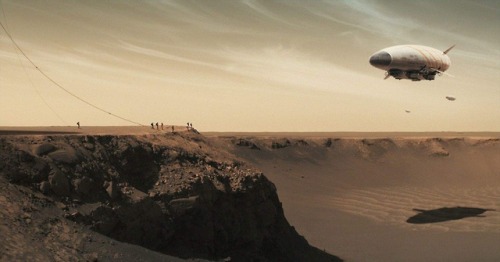
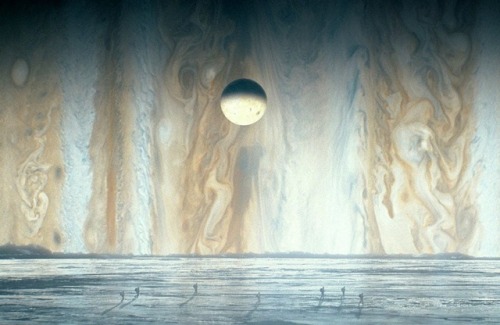

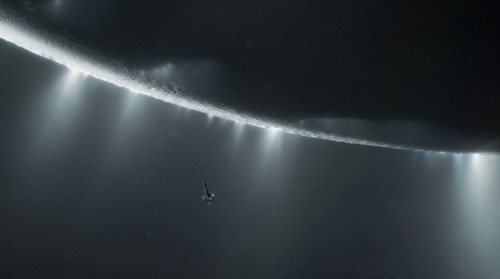
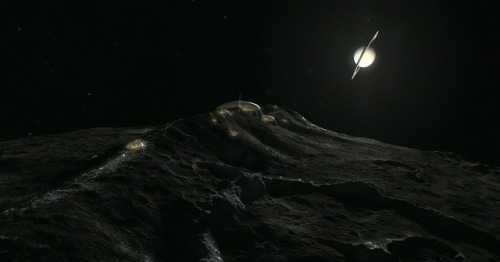
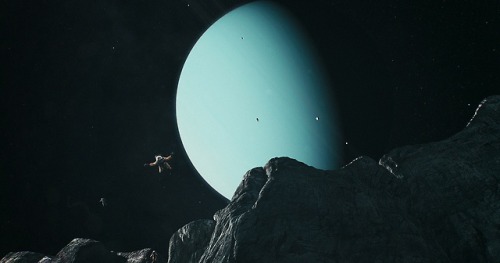
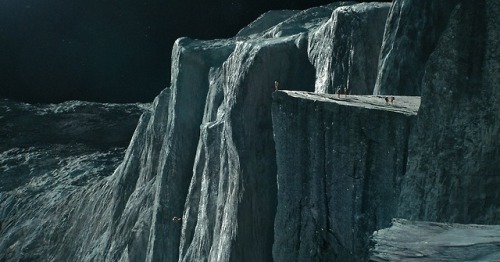

Will we one day explore the worlds of our solar system? How long will this take?
We have a diversity of worlds in our solar system. Majestic places…
Imagine being able to visit Mars and its hostile climate. Imagine being able to visit the moons of Jupiter, observe Io: the volcanic moon, Europa, the frozen moon and Ganymede a moon larger than Mercury itself and that has its own magnetic field. Imagine visiting the moons of Saturn and maybe passing close to your rings… Imagine orbiting or floating through Titan’s atmosphere and closely watching its lakes and seas of methane and liquid ethane. Imagine getting to know the geysers of Enceladus, the valleys of Tethys, and the craters of Mimas… Imagine being able to see the moons of Uranus and have a view of Verona Rupes, the largest cliff of the solar system, located in Miranda. Imagine being able to be in Triton and to be able to observe the cold and azualdo Neptune in the sky…
More Posts from Sharkspaceengine and Others

Behold Tharsis Montes, three massive shield volcanoes in the Tharsis region of Mars. In this illustration by Dutch artist Kees Veenenbos, using data from NASA’s Mars Orbiter Laser Altimeter, we can see the volcanoes Arsia Mons, Pavonis Mons and Ascraeus Mons, southwest to northeast.
(Space 4 Case)

Picture of the Day 2 - January 13, 2019
Sun sets over the limb of a gas giant.





Triangulum Log - Blue Veil System - Post 3 (Lunar Skies)
Many of the system’s gas giants have large satellites with significant atmosphere’s. Here are some of the best views of the skies of these moons.
High Resolution Pics
Image 1 - The Great Eye in the sky
Image 2 - Double Sunset
Image 3 - Lunar Desert
Image 4 - Tranquility
Image 5 - Cold Distant Giant










Triangulum Log - Vernier System.
We’ve gone deeper into the Triangulum System and come across this binary system. The system consists of a hot F-Type Star 3.1 times brighter than our sun, orbited by a much less luminous K-Type Star only a fifth the brightness of our sun. The system has 6 planet’s including the most earth-like planet I’ve come across yet.
The Inner-most planet is a warm Ice-Giant with 53 earth masses and atmosphere temperatures of 378 K or 221 °F, orbiting the common center of mass of the two suns at a distance of 0.78 AU. The atmosphere of the planet is extremely turbulent under the intense sun-light. Wind speeds reach up to 1,100 kilometers per hour and cyclonic systems churn across the equator.
The second planet is Earth-like planet roughly 0.20 Earth masses, and radius 0.60 times that of Earth. Liquid water oceans cover a small portion of the surface. The planet is more desert-like than Earth, with water covering less than 15% of the surface. The atmosphere has only 0.15 atmosphere’s of pressure and has an unusual composition. Carbon dioxide comprises 84.4% of the atmosphere mixed with 13.1% Acetylene and 1.3% sulfur dioxide. The acetylene is stable in the atmosphere due to there being no oxygen; however, ultraviolet light natural breaks the compound down, forming Tholins in the atmosphere, giving the atmosphere a thick haze. Surface temperatures average 320 K or 116 °F. The planet has no polar ice-caps and orbits 1.25 AU from the stars. Several asteroid-sized moons orbit the planet along with larger rounded satellite that has a radios of 374 km.
High Resolution Pictures.
Picture 1 - Two Suns and a Giant
Picture 2 - Inner-Most Ice Giant
Picture 3 - White and Orange Suns over stormy skies
Picture 4 - Jewel of the System - Earth-like World
Picture 5 - Desert-world with some seas
Picture 6 - Hazy Atmosphere
Picture 7 - Planet’s Surface
Picture 8 - Different Layers of the atmosphere.
Picture 9 - Planet’s small moon.
Picture 10 - Sun’s setting on the lunar surface.
Red Giant

Picture of the Day - November 8, 2019
A scorched plant and its moon orbiting a bloated Red Giant. Both of these worlds orbit the star at twice the distance Neptune orbits from the sun, yet have surface temperatures of more than 1,200 °F.





Vernier System - Post 2 (Third Planet and its moons)
Here we come across the system’s third planet, a Jupiter-Sized gas giant 1.18 Jupiter Masses orbiting the two suns at an average distance of 2.33 AU. Four massive moon’s all with atmospheres orbit’s the giant. The planet has a very faint ring system in orbit.
High Resolution Pic of the 3rd Planet
Note, the large red nebula in the background NGC 604, one of the largest know nebulas. The Vernier System is located 4,600 light years from the nebula. From here NGC 604 covers over 16 arc degrees of the sky (36 Full-moons), and shines with an average magnitude of -1.91.
The first moon is barren with a surface covered in craters and gray-colored regolith. It is 3.4 lunar masses, with a radius of 2,603.31 km. A thin sulfur dioxide atmosphere clings to the surface. The atmosphere has a very low surface pressure of 0.0001 atmosphere’s. The moon still appears to be volcanically active.
High Resolution Pic of the 1st moon
The second moon has 4 lunar masses with a radius of 2,956.36 kilometers. It’s surface is more geologically diverse with larger quantities of iron oxide. It is more Mars-like than Lunar-like. A sulfur dioxide atmosphere also covers the surface, but is thicker with a surface pressure of 0.017 atmospheres, or roughly just under 3 times thicker than the atmosphere of Mars.
High Resolution Pic of the 2nd moon
The third satellite is by far the largest, and is an Earth-sized moon with a mass of 0.56 Earth’s and a radius 93% that of Earth. It has a thick carbon dioxide-ammonia atmosphere, with a surface pressure 3.48 times that of Earth. Weather is very active on the surface, and the temperature averaging 230 K (-45 °F) supports liquid sulfur dioxide. Sulfur dioxide rain is also common on the surface. The satellite also appears to have a magnetic field.
High Resolution Pic of the 3rd moon
The fourth moon is a second largest with a mass of 0.07 times that of Earth and a radius of 3,274.23 kilometers. It also has a thin sulfur dioxide atmosphere, and sulfur dioxide ice-caps. The atmosphere is 0.017 atmosphere’s thick.
High Resolution Pic of the 4th moon
The System Tag for this system in Spaceengine is RS 1229-169-6-235375-219.

Picture of the day 3 - November 19, 2018
Dim red sun faintly illuminates a giant planet and it’s ring in a dull red light.
Insight A System (Inner 5 Planets)
First post of the Insight A system. Insight A is the larger or primary of Insight’s 2 stars. The Insight System is a wide-spaced binary system consisting of a type G1V and type K5V star that orbit one another at an average distance of 192.3 AU once every 2,432 years. Insight A is 1.6 times the luminosity of our sun, and Insight B just 1/6th that of our sun.
Below are the first five worlds orbiting Insight A.
Insight A-I (0.56 Earth Masses - Rocky, 0.04 AU)

Insight A-II (2.66 Earth Masses, Rocky Super Earth, 0.07 AU)

Insight A-III (13.22 Earth Mass, Ice-Giant, 0.12 AU)

Insight A-IV (41.38 Earth Masses, Ice Giant, 0.36 AU)

Insight A-V (0.14 Earth Masses, Rocky with Liquid Water, 0.69 AU)


Picture of the day - November 22, 2018
Crescent of a moon against the silhouette of a green gas giant.
-
 interstellarstorms reblogged this · 5 months ago
interstellarstorms reblogged this · 5 months ago -
 kawiza reblogged this · 8 months ago
kawiza reblogged this · 8 months ago -
 gueule-de-contact liked this · 9 months ago
gueule-de-contact liked this · 9 months ago -
 crucrionnia reblogged this · 11 months ago
crucrionnia reblogged this · 11 months ago -
 revolverthemes liked this · 1 year ago
revolverthemes liked this · 1 year ago -
 sumechiayuu reblogged this · 1 year ago
sumechiayuu reblogged this · 1 year ago -
 ocularskewer liked this · 1 year ago
ocularskewer liked this · 1 year ago -
 brokenimageswherethesunbeats liked this · 1 year ago
brokenimageswherethesunbeats liked this · 1 year ago -
 anpaintsthemoon liked this · 1 year ago
anpaintsthemoon liked this · 1 year ago -
 estefanyailen liked this · 1 year ago
estefanyailen liked this · 1 year ago -
 cosmic-shark reblogged this · 1 year ago
cosmic-shark reblogged this · 1 year ago -
 thankyoufortheadventure liked this · 2 years ago
thankyoufortheadventure liked this · 2 years ago -
 draghes liked this · 2 years ago
draghes liked this · 2 years ago -
 writingfish reblogged this · 2 years ago
writingfish reblogged this · 2 years ago -
 dani-pants reblogged this · 2 years ago
dani-pants reblogged this · 2 years ago -
 sisterzoned reblogged this · 2 years ago
sisterzoned reblogged this · 2 years ago -
 wings-scales-fire reblogged this · 2 years ago
wings-scales-fire reblogged this · 2 years ago -
 the-fresh-prince-of-busan reblogged this · 2 years ago
the-fresh-prince-of-busan reblogged this · 2 years ago -
 heresjeonny liked this · 2 years ago
heresjeonny liked this · 2 years ago -
 agamenon-11 liked this · 2 years ago
agamenon-11 liked this · 2 years ago -
 dani-pants liked this · 2 years ago
dani-pants liked this · 2 years ago -
 ichigorosedoll reblogged this · 2 years ago
ichigorosedoll reblogged this · 2 years ago -
 satellitesempreinorbita liked this · 2 years ago
satellitesempreinorbita liked this · 2 years ago -
 younghologramdreamsworld reblogged this · 2 years ago
younghologramdreamsworld reblogged this · 2 years ago -
 younghologramdreamsworld liked this · 2 years ago
younghologramdreamsworld liked this · 2 years ago -
 byebyeuf0 liked this · 2 years ago
byebyeuf0 liked this · 2 years ago -
 tsuchiman reblogged this · 2 years ago
tsuchiman reblogged this · 2 years ago -
 saint-lucas liked this · 2 years ago
saint-lucas liked this · 2 years ago -
 thatswhatheavenfeelslike reblogged this · 2 years ago
thatswhatheavenfeelslike reblogged this · 2 years ago -
 the-widow-hazard reblogged this · 2 years ago
the-widow-hazard reblogged this · 2 years ago -
 paladinsandruffians liked this · 2 years ago
paladinsandruffians liked this · 2 years ago -
 rainstormraider reblogged this · 2 years ago
rainstormraider reblogged this · 2 years ago -
 the-widow-hazard liked this · 2 years ago
the-widow-hazard liked this · 2 years ago -
 kaliyera liked this · 2 years ago
kaliyera liked this · 2 years ago
My Space Engine Adventures, also any space related topic or news. www.spaceengine.org to download space engine. The game is free by the way. Please feel free to ask me anything, provide suggestions on systems to visit or post any space related topic.Check out my other blog https://bunsandsharks.tumblr.com for rabbit and shark blog.
294 posts
